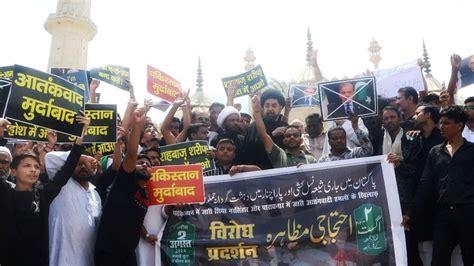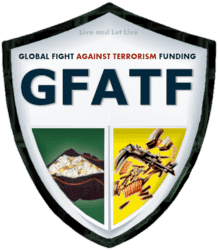
Pakistan’s Shia killings mark the collapse of its nationhood. Islamic State knows only war
The killing began because of the gentle light of the crescent moon. Late in the summer of 1988, in the last days of the long darkness in which a tyrant had shrouded his nation, Shia clerics had declared the coming of Eid. Local Sunnis, however, insisted the month of prayer and fasting would only end one day later. Two people died in the riot that followed. Led by local politicians, under the benign gaze of General Muhammad Zia-ul-Haq’s military, jihadists from Chilas, Darel, and Tangir then besieged Shia villages around Gilgit. The slaughter continued for three days. A hundred and fifty people were killed.
Forty-two Shia pilgrims, including children and women, were murdered earlier this week in Khyber-Pakhtunkhwa’s Kurram, a massacre thought to have been conducted by Tehreek-e-Taliban (TTP) jihadists. TTP jihadists have also killed more than a dozen Pakistani troops in recent days, part of a murderous offensive which has seen them stamp their authority across Khyber Pakhtunkhwa and northern Balochistan.
The killing goes to the heart of Pakistan’s implosion as a nation-state. Faltering as its nationalist project ran into ethnic and linguistic challenges, Pakistan repainted itself in the colours of religious chauvinism. The Islamic State, which emerged in the 1970s, brutalised religious minorities like the Ahmadiyya and the Shia.
Even more thorough than the jihadist killings has been the erasure of Pakistan’s religious minorities from its national imagination. Few in the country now know that its founding leader, Muhammad Ali Jinnah, was born an Ismaili and embraced Shia practice. Former Prime Minister Benazir Bhutto, like her father Zulfikar Ali Bhutto, was compelled to disavow her Shia heritage, political scientist Vali Reza Nasr notes. Even former Army chief Lieutenant General Qamar Javed Bajwa had to carefully veil the Ahmadi roots of his wife, the daughter of war hero Major General Iftikhar Janjua.
The rise of violence
Living in Lahore at the end of the 19th century, writer Rudyard Kipling witnessed the communal violence which often accompanied Muharram processions. “The first Tazia, a gorgeous erection, ten feet high, was borne aloft on the shoulders of a score of stout men into the semi-darkness of the Gully of the Horsemen,” he writes.
Then, “a brickbat crashed through its talc and tinsel sides… The Tazias rocked like ships at sea, the long pole-torches dipped and rose round them while the men shouted: ‘The Hindus are dishonouring the Tazias! Strike! Strike! Into their temples for the Faith!’”
Elsewhere in British India, though, Shia practice embedded itself in its milieu. Awadh’s Hindus, scholar Juan Cole records, embraced the Shia hero Hussain as their god of death, “his bloodstained horse and severed head lifted aloft on Umayyad staves presenting no less terrible an aspect than Kali Durga with her necklace of skulls.” And in Hyderabad, Hindu fakirs led the Muharram procession, while saffron-clad Hindu pilgrims rubbed incense ash into their eyelids.
Through most of the pre-colonial period, there was little significant conflict between Shia and Sunni. From the 18th century, however, theologians like Shah Waliullah Dehlawi began to cast the decline of Islamic power as a consequence of the supposedly heretical practices of the Shia. Later, Sayyid Ahmad of Rae Bareli—best known for his failed jihad against Maharaja Ranjit Singh—sharpened these anti-Shia ideas, Nasr records.
From early in the 20th century, historian Mushirul Hasan explains, the struggle for political power in Muslim communities sharpened Shia-Sunni boundaries, often leading to violence. Zealots in the Sunni ranks broke cultural taboos by promoting the memory of the three caliphs Shia regarded as usurpers: Abu Bakr, Umar, and Usman. Tazias, some Sunnis declared, were contrary to the spirit of Islam.
These ideas began to flower in the new nation of Pakistan. Led by the Right-wing cleric Noor-ul-Hasan Bukhari, Islamic studies scholar Andreas Reick writes, Sunni groups began to agitate against Shia religious observances from the early 1950s. For example, religious processions were banned in Sargodha because of Sunni opposition. When a delegation of the Right-wing Majlis-i-Ahrar, was asked to mediate on the issue, one member declared the very word ‘Shia’ was offensive.
In 1955, Muharram processions were banned or attacked in at least 25 places across the province of Punjab, while several people were injured in an attack on Imambargah in Karachi. Faced with rising tensions, Reick writes, the Government of Pakistan even contemplated making all Shia processions contingent on the consent of Sunni communities.
Conflict in the mountains
Far from the sweltering plains of southern Punjab, sectarian conflict was also beginning to ignite. For centuries, the mainly Shia Turi tribe of Kurram and their neighbours, the largely Sunni Bangash tribe, had fought over pasture lands and water. In 1877, the Turi even allowed the armies of Field Marshal Frederick Sleigh Roberts to pass through their territories on his way to deliver colonial wrath in Afghanistan, hoping it would win them British protection. The Turi ended up on Britain’s side of the border with Afghanistan and also gained a measure of colonial education.
The tribes, though, were both ethnic Pashtun, historian Mariam Abou Zahab has recorded, and these conflicts were read through the prism of tribal interests, not religion. That would begin to change in the 1930s, as riots broke out in Gilgit as a result of the Turi celebration of the festival of Nowruz.
Following independence, however, these tensions became more marked. The rebellion against the Kashmir Maharaja’s government in Gilgit led some Sunni reactionaries to fear that a Shia state might be formed. And in 1973, Zahab records, fighting broke out after a dispute over the height of minarets in Shia and Sunni mosques.
The crisis would break, however, after General Zia led Pakistan to war against the Soviet Union’s government in Afghanistan. Large numbers of Sunni refugees flowed into the region, provoking fears of marginalisation among the Turi. Turi resistance to the jihadists operating from the region led to violence in 1962, with dozens of Shia families being forced to flee Parachinar. Fighting broke out again in 1986, leading up to the massacre two years later.
Large-scale killings took place again in 1996, and over 200 people from both communities were killed in the fighting, which involved the use of automatic weapons and mortar.
In the plains, meanwhile, groups like venomously anti-Shia Sipah-e-Sahaba, set up with the support of General Zia, grew increasingly powerful. The organisation was closely allied with jihadist groups operating against India, like the Jaish-e-Muhammad.
The coming climax
Following 9/11, the Pakistani military’s close ties to Afghan jihadists led to growing conflict in Kurram. The Haqqani Network, the Taliban’s most powerful element, was allowed to embed itself into the region, which offered an easy opportunity to attack Western and Indian targets in Afghanistan, analyst Jeffrey Dressler notes. The Jaish-e-Muhammad also established a training camp in Kohat, together with other jihadist organisations.
Al-Qaeda and TTP forces, Zahab records, levelled at least 40 Shia villages after the fundamentalist-controlled Lal Masjid in Islamabad was attacked by the military in 2007, leading to clashes which compelled the government to deploy helicopter gunships. The jihadists even beheaded Shia soldiers and police personnel.
Fresh clashes broke out in 2009 when jihadists blockaded Shia areas of Kurram and killed officials and tribal elders. A hundred and fifty people are believed to have been killed in two weeks by jihadists operating under the command of Hakeemullah Mehsud.
The Pakistan Army responded by seeking to make peace with its jihadist clients and ceded the region to terror. Famously, Pakistani troops blockaded Turi territories in 2010, punishing the tribe for its refusal to allow jihadists to cross through their territories into Afghanistan. In 2012, massacres of Shia civilians took place on the road from Astor: “Shia kaffir”, the victims were forced to shout before they were gunned down.
Even though jihadists have now made unprecedented territorial control in Khyber-Pakhtunkhwa, the Pakistani state has shown neither the will nor desire to restore its authority. The reason isn’t far to find. From early in its trajectory, the Pakistani state collapsed in the face of the religious Right wing, abandoning the project of making a nation. General Zia rebuilt the country into an entity whose legitimacy was founded on religion alone.
The Islamist leader Abul A’la Maududi endorsed the idea of a Hindu state based on the laws of Manu, where Muslims would be subjugated, as he demanded an Islamic State founded on Sharia. That Islamic State is exactly what Pakistan’s jihadists have come close to creating with the help of the military. The Islamic State, though, is a place of infinite war, not peace and progress.
Fanaticism, it’s clear, inexorably devours the nations that nurture it. There are lessons in the tragedy unfolding in Khyber-Pakhtunkhwa that Indians need to carefully contemplate.
Source » msn.com





